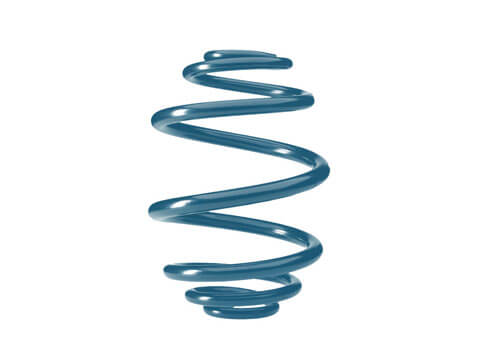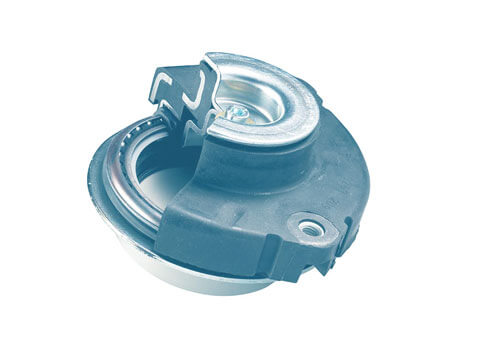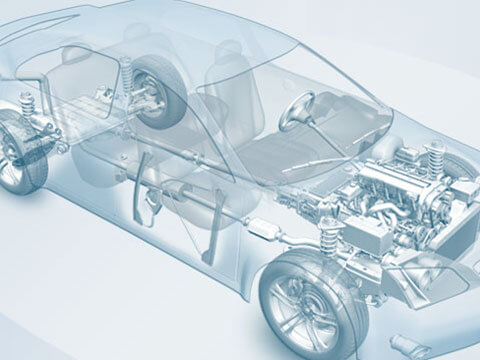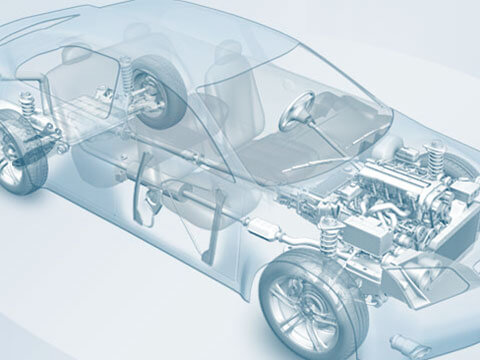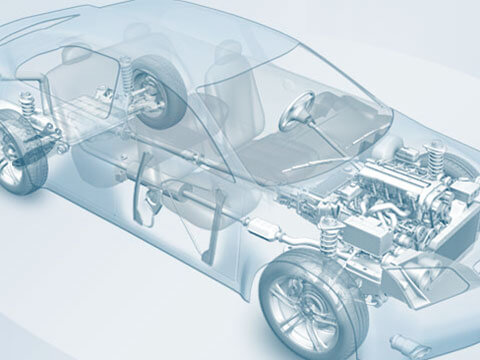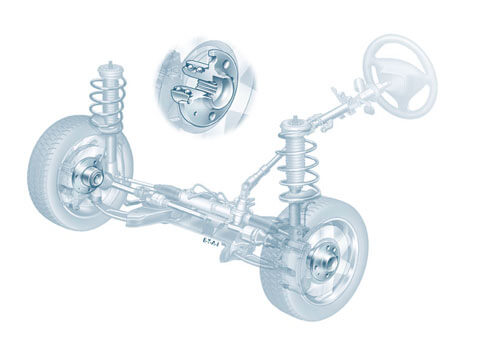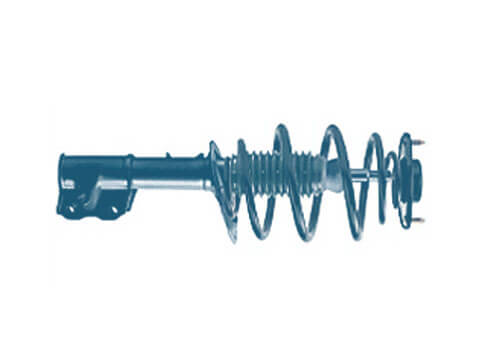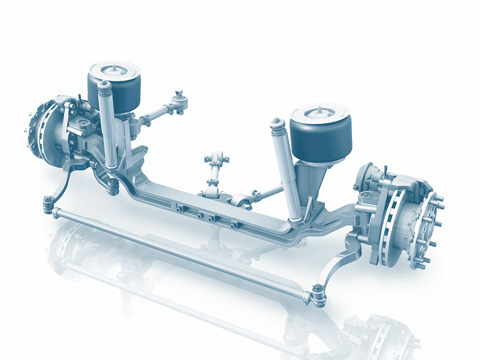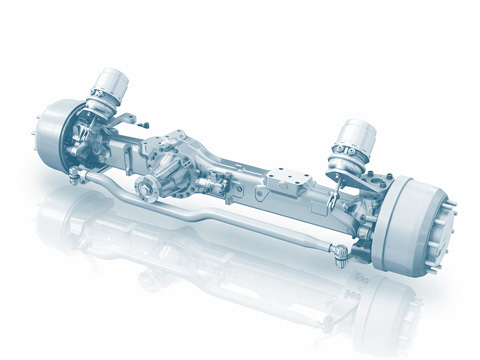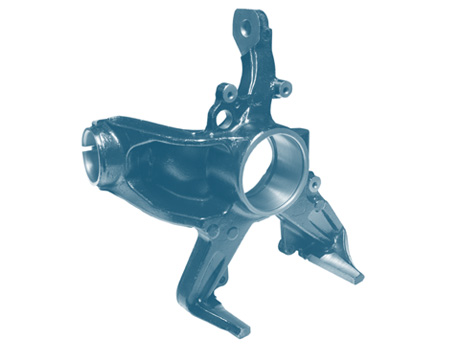Independent suspension
The wheel suspension assumes a crucial role in the vehicle chassis. It establishes the connection between the wheels and the vehicle’s body and transfers all forces and torques between the wheels and bodywork. The wheel suspension is intended to ensure safe driving characteristics and the highest possible comfort. There is a differentiation between independent suspensions, rigid axles and torsion-beam axles.
If the axle in question is a driving axle, it ensures that the driving force from the engine is transferred to the wheels. In addition, the front axle transfers steering motions to the wheels.
Function
In independent suspensions, both wheels on each axis are suspended independently of each other. The position of each wheel is independent of the other one. This independence and the low unsprung mass (the mass of the components which act on the road surface, either directly or indirectly, such as the tyres, rims and brake system) are advantages in comparison to collective suspension systems featuring a rigid axis.

Safety
The wheel suspension is instrumental in ensuring safe driving characteristics and thus for passenger safety. A malfunction or failure in one of the components of the wheel suspension can have severe consequences for the road safety of the vehicle concerned. To prevent dangers from developing, it is important to ensure that only trained personnel work on the chassis. They should regularly inspect and test all components. The use of products from well-known OE suppliers is mandatory.

Value retention
State-of-the art technologies are used in modern vehicles. These guarantee a long service life. In turn, this helps to stop a vehicle’s value depreciating.





